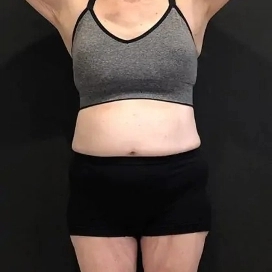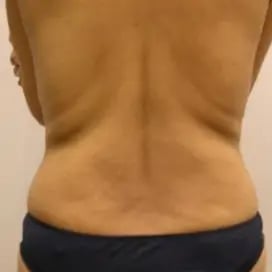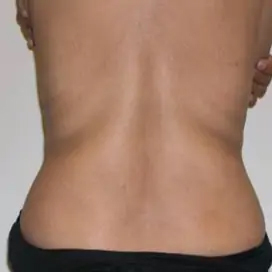Most people’s concerns with Botox start with either “How long has it been around? Is it safe?” or “How will I look after?”
Each year, hundreds of thousands of women and men pay a visit to their derm and go under the needle in the name of smooth, wrinkle-less skin; in fact, Botox sales have soared past the $1 billion mark over the past decade.
Botox is a protein and neurotoxin. It was used in humans starting in the 1980s but was found to relax muscles as early as the 1940s. While Botox has been on the rise in recent years, the FDA-approved prescription has been studied for several decades.
There are still quite a few things that will surprise you to find out about the now-commonplace procedure, however.
Let’s start with the basics, first, though:
- First things first—Botox is not a filler. Instead, an injection of it relaxes the muscle that’s forming the wrinkle, rather than plumping it up (like fillers do).
- Patients with deep creases and lines are great candidates. But Botox can also be preventative. Patients in their late 20s who are starting to see lines develop (like crow’s-feet, frown lines, and vertical lip lines) could benefit from Botox. As with any medical procedure, consult your doctor.
- There’s barely any recovery time. Unlike a chemical peel or other in-office treatments for wrinkles, Botox can be done quickly — you could be in and out during lunch. You might experience redness and swelling, similar to a bug bite, but that should subside within a few hours. Be aware, though, that there are some side effects you could experience, depending on where you receive the procedure, such as drooping eyelids, blurred vision, and trouble speaking or breathing (due to relaxed muscles). That is why it’s imperative you research and choose the right doctor for this procedure. Those in Marin County can visit our practice where our surgeons are board certified with 40 plus years of experience.
- Just say “no” to Botox parties. While television shows have glamorized Botox in group settings, it is a medical procedure. (Obviously.) Therefore, you should always consult your doctor prior to receiving the treatment and get it done in office to ensure it’s done properly and you’re able to ask any and all questions you may have.
- You can see results as early as 24-48 hours after. Botox patients love the instant results the procedure gives, but you’ll see maximum results about three to four weeks after your appointment.

- On average, a patient will regain full motion of the treated muscles about three to four months after the Botox treatment. However, some people do develop a resistance to the effects of Botox over time. If that happens, the recommendation is usually to switch to Xeomin. Both Botox and Xeomin use the same ingredient to block nerve activity that causes facial muscles to contract when we form expressions. When the muscles relax, wrinkles do not form. Botox gained FDA approval about 10 years earlier than Xeomin. Each is considered very safe, and both take about a week to get the desired results, although each patient’s experience is different. Xeomin is a good alternative for patients who are allergic to Botox because it doesn’t include the same additive as Botox. The best way to decide which to use is to consult with our board-certified plastic surgeons.
Now, let’s dive into some lesser-known facts:
- In case you didn’t know, Botox is actually the brand name of a particular strain of neurotoxin called the botulinum toxin. And how exactly was this neurotoxin discovered? Way back in the 1820s, a certain Dr. Justinus Kerner was trying to figure out why a batch of blood sausages ended up poisoning several dozen Germans. Turns out, there was a toxin in the meat that caused their deaths. Dr. Kerner dubbed his discover “botulism” from the Latin root botulus, which means sausage, and the rest is history. So yeah—not exactly dinner party conversation but still interesting, no?
- You might think of Botox as strictly a beauty procedure, but it has quite the sordid past. At the beginning of World War II, the U.S. began researching biological weapons, including—yup, you guessed it—botulinum toxin. According to this article in the International Journal of Dermatology, one plan involved using Chinese prostitutes to slip tiny toxic pills of botulinum toxin into the food and drinks of high-ranking Japanese officers. The gelatin capsules were produced, but the plan was never carried out—which was probably for the best.
- Botox injections today are safe because the botulinum toxin has been sterilized and purified. It’s only used in very small doses, as well. Always go to a board certified and experienced doctor for administration.

- If you’ve sweat through your shirt more times than you can count, help is here…in the form of Botox. Yup, you can get Botox injected into the sweat glands under your skin to temporarily block chemical signals from the nerves that stimulate sweat glands. The results last about seven to eight months—talk to your doctor and see if it’s a good option for you.
- Here’s a crazy fact—early testing has shown that one Botox injection can help treat depression. Why? Think of it this way—your emotions are tied to your facial muscles and expressions, so relaxing your face muscles disrupts this connection. In this study published in the Journal of Psychiatric Research, researcher M. Axel Wollmer says he believes Botox “interrupts feedback from the facial musculature to the brain, which may be involved in the development and maintenance of negative emotions.”
- When Botox is injected into specific muscles, it blocks signals that cause unnecessary muscle tightening, which is the cause of chronic pain. A 2012 study showed that Botox injections significantly improved pain levels and overall quality of life for those who suffered from chronic neck pain.
- Botox actually received FDA approval in 2013 to be used as a treatment for migraine headaches. The weird thing is, it’s unclear why it eases migraine symptoms—the most popular theory is that it prevents pain signals from reaching your nerve endings. Talk to your doctor if you suffer from migraines, and want to know if Botox is a good option for you.
Interested in Botox or another procedure? Those in Marin County or the San Francisco area can make a consultation today with board certified and experienced surgeons.
Were you surprised by any of these Botox facts? Any we missed? Comment below!











